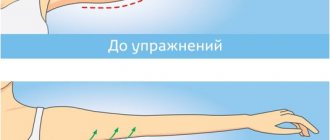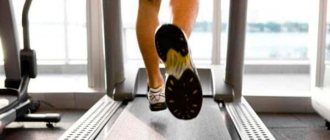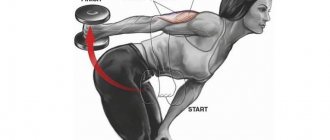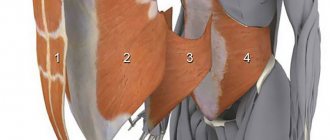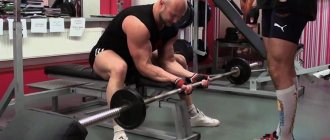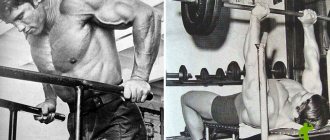When you are seriously passionate about something, you probably do it with all your heart, while not forgetting to monitor your results. After all, this equally applies to sports. If you are determined to achieve any results, you monitor the progress of each workout and the changes that occur in your body. This article will help you on how to take body measurements correctly.
But there are a lot of ways to determine the results of training, so in order not to bother you, I will tell you about the most basic of them. To begin with, we will determine the effectiveness of training for the purpose of losing weight and gaining muscle mass, there are three of them: weighing, body measurements and measuring subcutaneous fat. These three methods complement each other and together give a complete picture of what is happening.
The first method is weighing.
The simplest and most regular thing that all people involved in sports do is weigh themselves.
. It is necessary to monitor your weight, but you cannot rely on this indicator alone. Since when losing weight, a situation may arise that you, on the contrary, will gain a little weight, but this weight will not be gained by adding fat, but by increasing muscle mass. However, as is correct, this is a very low probability, since when you dry out (lose weight), your caloric intake decreases, and for muscle growth, on the contrary, you need to increase caloric intake (excess). Although this also happens - weight increases (body weight and volume), but not due to the increase in muscle tissue, but due to the appearance of excess subcutaneous fat or vice versa...
Basic rules for weighing:
- You need to weigh yourself every week, at the same time and on the same day of the week.
- You need to weigh yourself after using the toilet and before breakfast.
But in order for the picture to be more complete, in addition to weighing, you should take measurements of body volumes and measurements of fat folds using a caliper, because only then will you track your achievements and body changes over time (as correctly as possible). You can learn more about measuring subcutaneous fat in the article: How to measure subcutaneous fat.
Ideal volumes for women
Below are tables reflecting the ideal (reference) indicators of height, weight, age, waist, hips and more. I emphasize that the information below concerns ideal proportions for women. Men can safely skip this block.
There are various formulas for determining your ideal weight. For some time, in practice, the ratio of weight and height was used according to Brock’s formula: “Ideal weight equals height minus 100.” However, it is now believed that this formula is designed for women 40-50 years old. The optimal weight for women 20-30 years old should be reduced by 10-12%, and after 50 years old it should be increased by 5-7%. Today, tables and formulas are increasingly being used that also adjust for body composition. Using the following table, you can quickly and accurately determine your ideal weight, taking into account your height, age and physique.
Here we also provide a table of ideal hip volumes, taking into account height, age and body type.
For girls, it is worth noting that these indicators are ideal and your body may not currently correspond to them. This is not a reason to be upset at all! On the contrary, these discrepancies can serve as a reason to sign up for a gym and start adjusting your figure in accordance with your preferences, and the tables given here will only help with this and tell you in which direction to move.
The second method is body measurements
It is more accurate than the first, but as already said, they need to be combined.
Body measurements (body measurements) can be made with a regular centimeter tape, or with paper or thread, and then take readings with a ruler. The first method is more convenient, but if you don’t have a measuring tape at hand, then the second method is also perfect. So, how should you measure correctly and in what places? Let's talk about all this in order.
Body measurements for weight loss and weight gain
Wrist
– the measurement takes place with a relaxed hand, in the thinnest place (above the protruding bone).
Forearm
(part of the arm from the elbow to the wrist). It is measured in two states - relaxed and tense. In the first, the arm hangs calmly along the body, in the second, the arm is bent at an angle of 90 degrees, the muscles are tense. In both cases, the thickest part is measured.
Shoulder
(this is the part of the arm from the elbow to the shoulder, not from the shoulder to the neck). It is measured in a calm state - the arm hangs along the body, relaxed. Freezing in a tense state - the hand is raised and clenched into a fist at head level.
Neck
. It is measured in a calm state - the chin is slightly raised, the measuring tape lies horizontally, and not obliquely. Do not try to pull your neck into your body or stretch it, or even press your chin to your chest - this will not improve your training results, but on the contrary, you will deceive yourself.
Rib cage -
measured at the widest point for men and at the most protruding points for women. In a calm state, the measurement is taken after a calm, normal inhalation (do not inhale too deeply or stick out your chest). In a tense state, you need to tense the muscles of your back and chest and slightly spread your elbows to the sides. There is another option for measuring the chest. You measure it at maximum inhalation, then also at maximum exhalation. Add up the resulting readings, then divide by two, the resulting number is the average volume of your chest.
Waist -
measured at the thinnest point, if you have one. And if there is a protruding belly, then the measurement is made, on the contrary, along the widest part. Again, do not try to deceive the readings, so do not pull in your stomach, and do not pull the measuring tape too tightly, but it should not sag either - just adjust it to the measuring site. If you want to measure your waist in a tense state, then tense your abdominal muscles and measure.
Buttocks -
are measured, as a rule, in a relaxed state, at the most prominent points. That is why at the very beginning of the article it is said that it is better to take measurements with an assistant; it can be difficult not only to find the most protruding points at the back, but also to measure correctly.
Hip
– the widest part is measured in a relaxed state, either standing quietly or placing a bent leg on a chair. In a tense state - standing, leg straightened, muscles tense.
Shin
– measured at the widest point. Relaxed state - the leg is placed on a chair, tense state - raised on your toes, transfer your body weight to the leg that you are measuring.
Ankle
(located between the foot and shin) - you need to measure while standing on straight legs, in the thinnest part.
Rules and features in body measurements:
- You need to take measurements in the same places, at the same time of day and several times in the same place (for greater accuracy), but the best time is in the morning, after the toilet and before breakfast. Since the human body tends to swell at the end of the day, weight can also fluctuate significantly depending on the amount of food eaten per day.
- Taking body measurements more often than once every two weeks for those who work on mass (muscle growth) does not make sense, since muscle growth is a very long and painstaking process. But for those who are losing weight, measuring once a week is enough...
- It is better if someone helps you take body measurements, because it is inconvenient to carry out such manipulations alone. But if they are not carried out correctly, then the results of the training may not be as encouraging as we would like...
- Do not gently take measurements immediately after training. Since during training the blood vessels and capillaries (reserve) of our body expand, and therefore more blood begins to circulate through the muscles, as a result, the muscles become larger. Yes, you yourself have noticed how after training the muscles “puff up”...
- By the way, the volumes of the right and left parts of the body differ due to the physiological and anatomical characteristics of each person. You will learn more about this in the article: What to do if one pectoral muscle is larger than the other.
- Always write down or remember exactly where and on which side (right or left side of the body) the measurements were taken, so that next time you can take them exactly in the same place.
- Note the state in which the body measurement was taken - relaxed or calm.
What should your hips and chest be like to have an ideal figure?
If you know the circumference of your chest and hips, then this will also help you determine the “correctness” of your body. This indicator is also called “wiles”.
If you have a normal bone build, then indicators that can be calculated as follows will be considered normal: take the chest circumference and add 80-100 mm, while “ideal” hips should be 250-300 mm larger than the waist circumference.
If you have a thin-boned body constitution, then with a chest circumference of 840-860 mm, the bust norm will be 40-60 mm larger than these values.
Professor of psychological sciences Devendra Singh achieved the same success in research back in the early 90s. But only its proportionality between the hips and waist was calculated as a percentage. If you rely on his theory, then the ideal waist is considered to be one that is 60-70% less than the volume of the hips.
If you want to calculate your proportions yourself, then you need to divide your waist size by your hip size, and if the resulting coefficient is within the range of 0.6 to 0.7, rejoice, you have perfect shape. And by the way, the ideal proportions of the female body were in the Venus de Milo and the Nude by Rubens - they each had 70%. But among the people we know, Claudia Schiffer – 68%, Cindy Crawford – 68%, Kylie Minogue – 69% were awarded such proportions.
From a medical point of view, the proportionality of waist circumference to hip circumference should not exceed the endocrine balance coefficient, which, in turn, is equal to 0.85. Therefore, if your waist is no more than 85% of your hips, then your figure is in perfect order from both an aesthetic and medical point of view.
The third method is measuring subcutaneous fat
In addition to all the above measurements, it is necessary to periodically and regularly measure the fat layer (subcutaneous). Because volumes can increase due to subcutaneous fat, and you will think that it is your muscles growing.
There are a huge variety of methods for determining subcutaneous fat. Therefore, to learn in detail about each of them and choose the most suitable one for yourself, read the article: How to measure subcutaneous fat. Although I recommend a better method - Kalipometry,
since it is one of the accurate and simple ones.
Also, a recording of measurements missed due to lack of time or plain laziness can greatly spoil the picture of intensive training. Can you remember exactly all the numbers you received, say, a couple of weeks ago? It’s unlikely... But without this, it will be unclear how far you have progressed in losing weight or building muscle.
The importance of proper techniques
Correctly selected exercises are half the success. You can sweat for hours in the gym, pumping iron, but not achieve good results. Recommendations:
- If you have enough experience (at least one and a half to two years of training), you should use super series.
- It is necessary to use a “pyramid”.
- You can practice split training, thus placing more emphasis on the desired muscles.
- Observe your “colleagues” and seek advice from them, especially if they are more experienced athletes. Other people's experience can also bear fruit.
- Limit weights should not be used, the optimal number of repetitions is 8-12 times, the number of approaches is 3-4.
In case of stagnation in this group, the advice of a coach will be useful.
Other ways to determine training effectiveness
- For those involved in strength training, results can also be recorded based on the number of approaches, repetitions and weights lifted. But all this data must be recorded in a training diary, otherwise you will not be able to monitor your progress.
- For those who develop endurance, it would be useful to record the time spent covering distances, the number of contractions of the heart muscle and the distance covered. All this data also needs to be recorded in your training diary in order to clearly see your achievements.
- And the last method for today is a photo diary,
in principle, it is a good alternative to body measurements. Every month you take three photographs (primary) of your body, without clothes - front, back and side. But you need to constantly take photographs from the same distance and angle, otherwise the training results will not be accurate. As a result, by comparing photographs over several months, you will be able to see the difference not only in numbers, but also externally from the photographs. In this method, you can choose which part of the body to photograph, this will not interfere in any way, but on the contrary...
What are we measuring?
You need to measure as many parameters as possible - the more, the better. Measure not only your waist, but also your neck, chest, waist, hips, shins, shoulders, and even wrists and forearms.
It all depends on your desire and available time. Or maybe you want to tighten a specific area, such as your thighs. In this case, you will only measure the hip circumference. In the same way, you can only be interested in the circumference of your forearms or waist, provided that you are not interested in other parts of the body.
Some tips
- Don’t be too scared or worried if the weight suddenly “goes up” or the muscles stop growing. In both cases, you need to reconsider your training program and diet. You will learn more about nutrition for weight loss and muscle growth in the section Proper nutrition.
- There can also be many reasons why muscle mass stops growing. Some of the main ones are: lack of nutrients (energy), lack of recovery, no progression of load, poor exercise technique and your energy system is not yet ready for further growth, so it needs to be further developed (train regularly and follow the training program). If you are all If you analyze this, you will find what your problem of stagnation (plateau) is.
- It is quite possible that the weight that quickly escaped decided to settle on your sides and waist again just because a series of holidays passed in your life, and your diet was slightly disrupted. Or maybe you were sick or worked very hard, so you had no time for training.
How to increase biceps?
To increase the size of your biceps, you need to carry out training aimed at increasing muscle mass. There are several exercises aimed at increasing muscle mass.
Biceps curl.
Exercise to increase biceps. In order for all parts to develop proportionally, the exercise must be performed with different grips - wide, narrow and medium.
Pull-up on the bar.
You need to pull yourself up with a straight and reverse grip. A very good exercise that simultaneously develops the latissimus dorsi muscles.
Summarize
So we looked at the topic: How to take body measurements correctly. And how to determine the results of training?
Based on this, it becomes clear that in any sport it is necessary to analyze and compare the results, but if this is not done, then you will simply “stand still” and not progress. For this very reason, all athletes attach great importance to monitoring their achievements. After all, if you scrupulously monitor any process, then in the end you will learn to manage it (results).
Exercise, eat right and get better - good luck to you.
How to increase biceps: working on mass
If an athlete needs to build up his biceps muscle, then he needs to know how to gain the desired mass. The biceps is attached to the radius and scapula and serves to flex the arm. Knowing this and imagining the work of the flexor, you only need to select exercises to work it out:
- Barbell curls for biceps. This basic exercise is the basis of everything. For high-quality pumping, it is better to use a barbell with a curved bar - this makes it possible to put more stress on your arms and minimize possible injuries to your hands. The grip used is wide, medium and narrow.
- Lifting dumbbells. This equipment is even preferable, since the exercises can be varied by using “hammers” (inward grip with palms) or alternate lifting of dumbbells.
- Pull-ups on the bar with a reverse grip. Its width also varies.
- Kettlebells. They are quite suitable for this purpose with one drawback: the weights cannot be adjusted. You can, of course, use different weights, from 16 to 36 kg, if available.
Static exercises with weights will also help in training the arm flexors. To do this, you need to fix your elbows with a barbell, dumbbells, or kettlebells in a right angle position for about half a minute. At one time, the famous strongman Alexander Zass, nicknamed “Iron Samson,” paid tribute to statics.
If the athlete’s goal is long biceps, he needs to perform exercises to the full amplitude while standing or sitting, leaning his body back on an inclined bench.
If the athlete prefers a short (ball-shaped) flexor of the arms, then the exercises are performed bending forward or using a Scott bench - an inclined music stand.
Wrist and forearm blood pressure monitors
Our readers successfully use ReCardio to treat hypertension. Seeing how popular this product is, we decided to bring it to your attention. Read more here...
When choosing a tonometer, a person draws up a certain number of criteria that the device for measuring pressure must meet. A potential buyer has a choice between devices with a wrist or shoulder mount. Each model has its pros and cons. Among the main characteristics are measurement accuracy, compactness, appearance, and ease of use outside the home.
Tonometer on the forearm
Tonometers with a sleeve attached to the shoulder are recommended for older people, since such automatically controlled tonometers are much more comfortable to use.
This feature is due to the fact that, unlike the carpal vessels, the brachial vessels are larger, so blood circulation and heart rate are felt better on the shoulder. In people with chronic diseases of the blood vessels, measurements are more difficult, as the vessels become denser, which affects the quality of the signal and the reliability of the data obtained. Heart disease may also affect the reliability of your results.
Such features of the body require modern instruments, where the device takes measurements several times in a row, after which it shows the user the average value. Such devices also have additional functions:
- indicate disturbances in heart rhythm and interruptions in heart contractions;
- have a reminder function for scheduled measurements;
- save the results of previous measurements, including date and time.
Wrist blood pressure monitor
A wrist tonometer is a small and fully automatic device that is mounted on the wrist. Blood pressure is measured at the radial artery at the junction of the forearm and hand bones. The mechanism of operation is similar to the action of a shoulder tonometer. This type of device is convenient to use at home, as it does not require special skills. The compactness and lightness of the device allow you to comfortably use the wrist tonometer outside the home, at work or while traveling.
Wrist blood pressure monitors are not very popular, as there is an opinion that they do not give an accurate result.
Despite the obvious advantages, the device has a noticeable drawback. Most wrist-mounted devices produce insufficiently accurate results and have a large error. Often, a person can see a normal pressure reading when complications of arterial hypertension or high blood pressure have begun, when in reality the parameters are normal.
To improve the accuracy of the device’s readings, it is necessary to hold the hand on which the tonometer is attached in the area of the heart. It is worth considering that a difference in the position of the hand (even by a few centimeters) can introduce an error in the study results (up to 10 mm Hg). If you place the tonometer much higher than the position of the heart, the study indicators will be distorted in a higher direction; if lower, then in a lower direction
It is possible to measure blood pressure in a supine position, but even in this case it is important to ensure that the device on the arm is in the area of the heart
What to choose?
Since there is a large error in monitoring, experts do not recommend using this kind of devices for systematic monitoring or self-monitoring of pressure. To carry out regular measurements without visiting your doctor, it is better to opt for an automatic or semi-automatic device with a sleeve attached to the shoulder.
